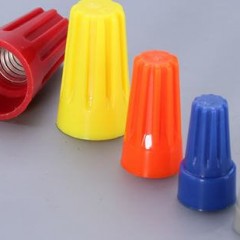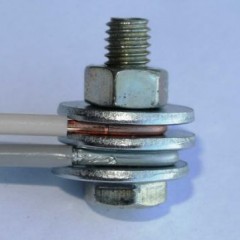How to connect wires with WAGO terminals of different series
What is important to know
WAGO terminal blocks are divided into disposable and reusable. Use disposable self-locking terminals in cases where the created connection of electrical wires does not require further maintenance. Theoretically, it is possible to dismantle the core, but this will require considerable effort. In addition, there is a high probability of destroying both the connector and the conductor itself.
Reusable connectors are used when it is necessary to create multiple collapsible electrical connections for different cables. The connection mechanism is very simple and looks as follows: in a disposable terminal block, the wire must be inserted into the socket, and in the reusable WAGO terminal block, the exposed core must be placed in the hole and the latch closed.
Operating Instructions
The company has a very wide range of electrical devices, among which the terminals are in special demand. Among them, the following series should be noted:
- 221 (WAGO universal miniature terminal blocks used in junction boxes),
- 224 (used in the installation of electric lighting devices);
- 243 (also used in junction boxes);
- terminal blocks mounted on DIN railsencountered with built-in fuses, circuit breakers, LEDs;
- special connectors used in printed circuit boards;
- distribution terminals in which a screw and a spring clip are simultaneously installed.
However, the terminals 221, 222 and 773 series are among the most popular, therefore, if WAGO connectors are mentioned among electricians, then most likely these three series are discussed. The people call them simply vagi. Note that WAGO terminals can even be 8-wire. Consider the design features and options for using terminals of different series separately.
222 series. These terminal blocks belong to the type of construction and installation. It is rational to use them to create multiple connections of both single-core and multicore wires.In order for the device to work correctly, a small lever is installed in it to fix the conductors, as shown in the photo below:
Using this lever allows you to easily disconnect the contact if necessary, for example, in the case of a readjustment of the circuit, or when testing the circuit. The terminal block has separate connectors where the conductors are inserted. Before you insert the wire and click into place, first strip its insulation. The clamp uses a flat spring type. You can find out how to use the WAGO 222 series terminals from the video:
773 series. The use of these connectors is necessary in cases of creating a single connection. In this case, you need to pay attention that the wires can only be single-core. If there is a need to connect stranded conductors, then first crimped tips.
The terminal blocks 773 can be filled with conductive paste during production, but there are also products without it. The use of this paste prevents the oxidation of aluminum wires, which is a significant advantage. The wago plugs filled with paste come in black or dark gray, so it’s easy to identify them. As in the reusable embodiment, the core is inserted to the limit, but since no special lever is used in these wagons, the wires are fixed with an internal clamp.
The video below demonstrates how to work with the terminals of the VAGO 773 series:
221 episodes. The wagon 221 terminals are gaining more and more popularity, they are convenient in that the design allows you to visually check the contact without unnecessary difficulties, because the clamps have a transparent body.
How to use WAGO 221 is described in the video tutorial below:
In addition, we recommend that you look at a few more instructions that detail the rules for operating wagon terminal blocks of other series:
In the practical use of wagons, any layman will be able to see for himself how easy it is to use them and how convenient it is, in comparison with the screw connections and twists that have faded into the background, which are not able to meet the requirements of quality and reliability in modern conditions. We hope, thanks to our instructions, it became clear to you how to use the WAGO 221, 222, 773 and other series terminals!
We also recommend reading:










